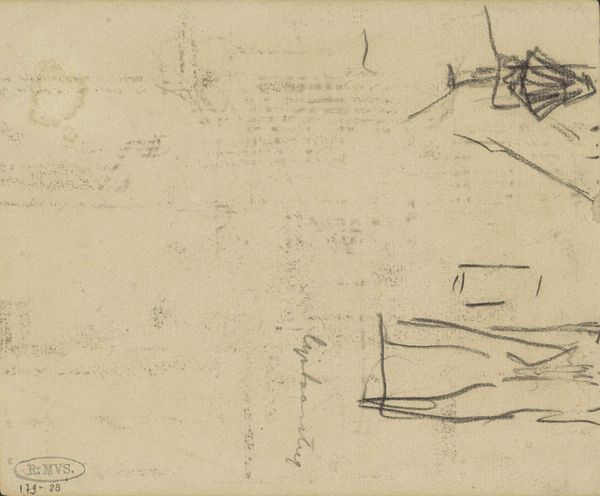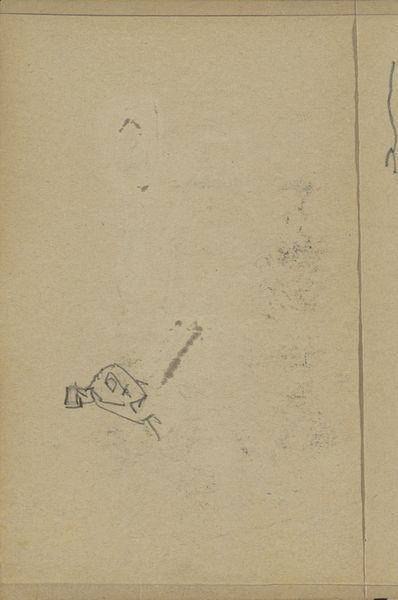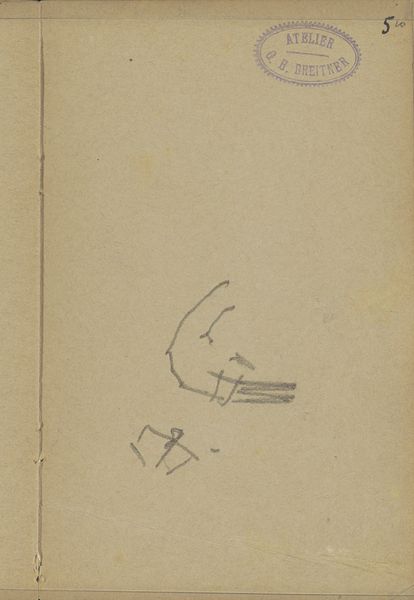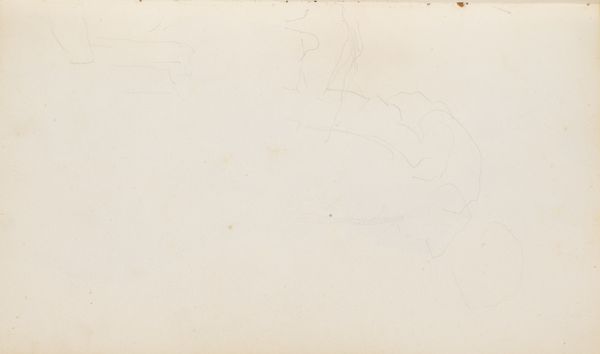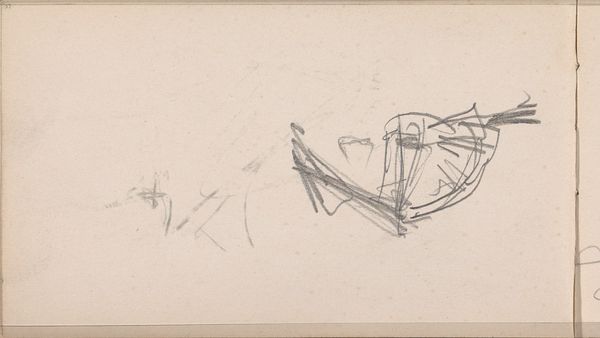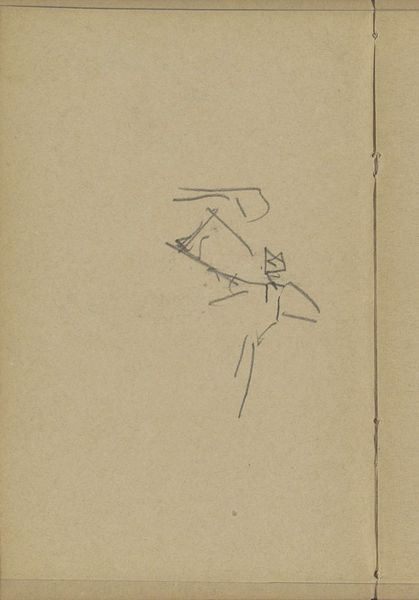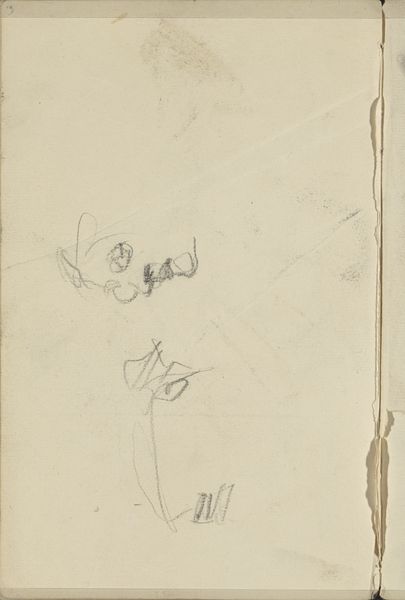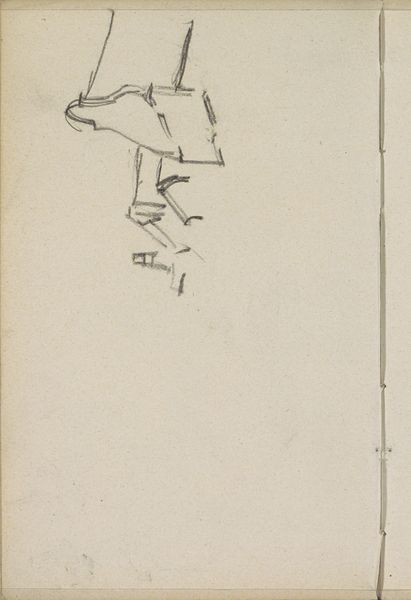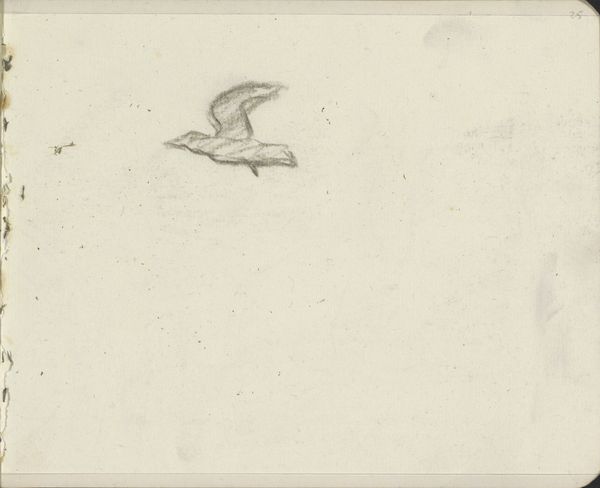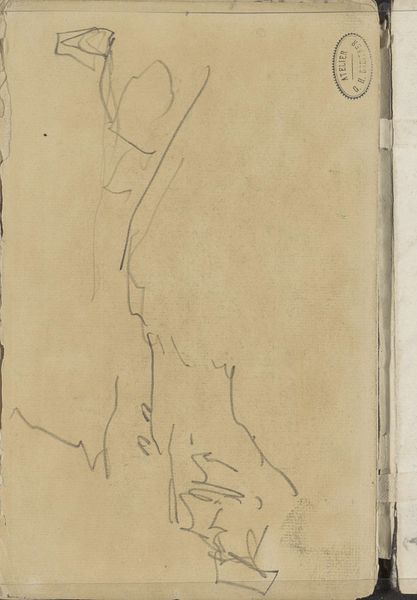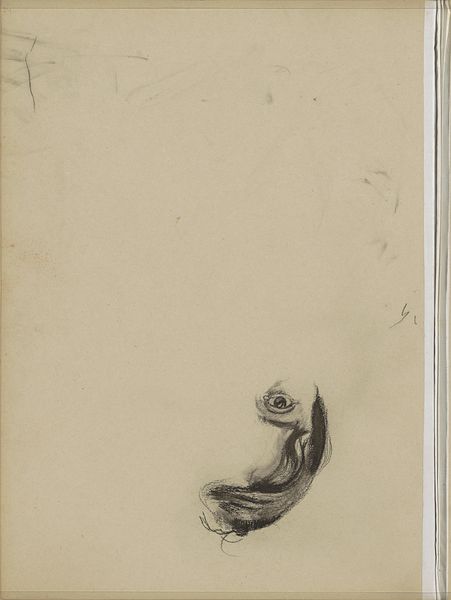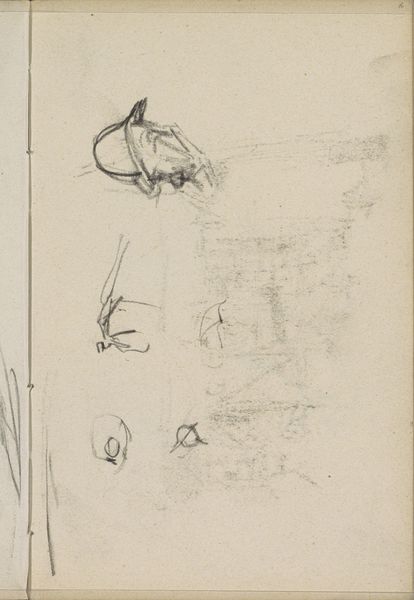
drawing, pencil
#
portrait
#
drawing
#
amateur sketch
#
light pencil work
#
quirky sketch
#
pencil sketch
#
figuration
#
personal sketchbook
#
idea generation sketch
#
sketchwork
#
pencil
#
sketchbook drawing
#
sketchbook art
#
realism
#
initial sketch
Dimensions: height 250 mm, width 162 mm
Copyright: Rijks Museum: Open Domain
Curator: Before us is Jozef Israëls' "Twee Mannetjes," which roughly translates to "Two Little Men," created sometime between 1834 and 1911, rendered in pencil. What's your first take on it? Editor: Oh, a wisp of a thing, isn't it? Barely there, like a half-remembered dream jotted down on a scrap of paper. They seem a bit comical, these little fellas, though melancholy too, somehow suspended in all that empty space. Curator: Yes, it's striking how the figures are placed so high on the page, dominating it with negative space. Israëls' exploration of light pencil work and his creation of preliminary compositional sketches—these aspects underscore its origins in the idea-generation stage. The visible strokes display an initial attempt at capturing subjects observed. Editor: Idea generation, absolutely! It has the intimacy of peering into the artist's personal sketchbook, a stolen glance at figures that amused or intrigued him. You can almost see him tweaking their poses, the subtle shifts in weight, trying to pin them down just right. Curator: It reflects a moment in the artist's practice, and the medium of pencil lends itself to easy reworking. What resonates, also, is the material reality; graphite harvested, manufactured into pencils, leaving dark matter behind upon the fibers of the paper. The economics and politics of access to these simple tools also speaks to the changing definition of artistic practice in this era. Editor: So true! But beyond that, the figures themselves... they tell their own quiet story, don’t they? Their stooped shoulders, the way they huddle together – are they weary travelers? Or maybe just two souls caught in the everyday grind. It sparks something. A feeling of quiet empathy. Curator: Israëls' background is marked by a shift from grand historical paintings to more intimate portrayals of everyday life, especially themes related to the struggles of the working class, so that tracks. His Realist style, visible in his initial sketchbook art, reflects an amateur yet sincere way of sketching as an approach. Editor: Makes you wonder what stories he intended to tell with them, doesn't it? Or perhaps they’re perfect as they are, a whisper of humanity caught on paper, inviting us to fill in the blanks. It leaves you feeling a bit incomplete, actually...like a question without a satisfying answer. Curator: Well, it is but a fragment. It certainly illuminates aspects of artistic labor that might normally be obscured. Editor: Precisely. Food for thought, this fleeting glimpse. A humble creation, yet rich with possibilities.
Comments
No comments
Be the first to comment and join the conversation on the ultimate creative platform.
